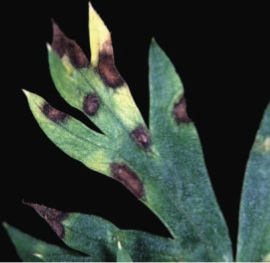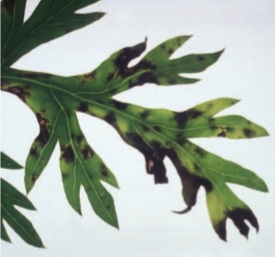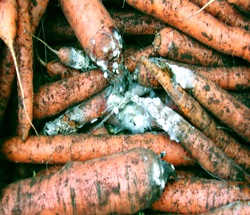1)PC 34:
2)Punjab Black beauty:
3)Punjab Carrot Red: It gives an average yield of 230qtl/acre.
Other state varieties:
1)Exotic Varieties: 1) USA – Red cored chantenay, Danvers half long, Imperator. 2) New Zealand: Akaroa long red, spring market improved, Wanganui giant. 3)Japan: Suko 4)Belgium : Belgium white 5)Netherlands: Early Horn 6) Australia: Red elephant, western red, yellow 7) France: Chantenay, Nantes, oxheart
2)Pusa Kesar:
3)Pusa Meghali: Orange colored carrot variety, developed at IARI, New Delhi. Gives average yield of 100-120 qtl/acre.
4)New Kuroda: Hybrid suitable for plain as well as hilly areas.
Soil –
Climate-
Seed Rate
For sowing of one acre land seed rate of 4-5 kg is sufficient.
Seed Treatment
Before sowing soaked seeds in water for 12-24 hours. It will increased germination percentage.
Time of sowing
August-September is best time for sowing local (desi) varieties of carrots whereas October-November month is ideal for European varieties.
Spacing
Use row to row spacing of 45 cm and plant to plant spacing of 7.5 cm.
Sowing Depth
For good growth, sow seeds at depth of 1.5 cm
Method of sowing
For sowing use dibbling method and also use broadcasting method.
Fertilizers requirement (Kg/acre)
UREA | SSP | MURIATE OF POTASH | ZINC | |
| 55 | 75 | 50 | # | |
Nutrients Value(Kg/acre)
| NITROGEN | PHOSPHORUS | POTASH |
| 25 | 12 | 30 |
Take interculture operation like weeding and hoeing to keep check on weed growth also to provide soil aeration.
1.Aphids –
Biological Control
Cultural Control
1.Nitrogen
|
| Deficiency Symptoms |
The Number and size of leaves were reduced and pale green colour of leaves change to yellow roots because thin, stiff and fibrous. |
| Correction Measure |
Foliar spray of urea @1% |
2.Phosphorus
|
| Deficiency Symptoms |
|
| Correction Measure |
Soil application of recommended dose of Phosphorous fertilizer |
3.Potassium
|
| Deficiency Symptoms |
|
| Correction Measure |
Foliar spray of KCl@1% |
4.Calcium
|
| Deficiency Symptoms |
|
| Correction Measure |
Foliar spray of CaCl2@0.5-1.0% |
5.Magnesium
|
| Deficiency Symptoms |
|
| Correction Measure |
Foliar spray of MgSO4@0.5-1.0% |
6.Boron
|
| Deficiency Symptoms |
Crinkling of leaves; carrot size become smaller |
| Correction Measure |
Foliar spray of borax@0.5% |
7.Iron
|
| Deficiency Symptoms |
|
| Correction Measure |
Foliar spray of FeSO4@0.5% |
8.Zinc
|
| Deficiency Symptoms |
Young leaves become smaller i.e. little leaf symptoms. and become yellow in color |
| Correction Measure |
Foliar spray of ZnSO4@0.5% |
1.Cercospora leaf spot: Cercospora carotae

Symptom
|
Management
2.Bacterial blight: Xanthomonas campestris pv.carotae

Symptoms
Management
2.Bacterial soft rot: Erwinia carotovora sp. Carotovora

Symptoms
Management
4.Sclerotinia Rot or White mold: Sclerotinia sclerotiorum

Symptoms
Management
25 – 30 t/ha in 100 – 120 days
Growing districts Nilgiris, Dindigul and Krishnagiri
Major markets in Tamil Nadu Mettupalayam, Dindigul, Coimbatore and Chennai
Grade Specification Size, diameter or length.
